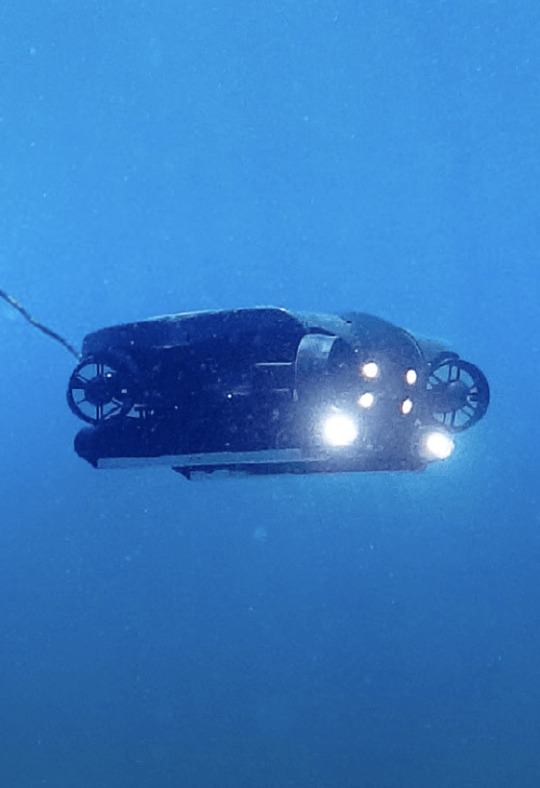Don't wanna be here? Send us removal request.
Text
Delivering Underwater Excellence with ROV and Commercial Diving in Texas

Texas is a hub of maritime, offshore, and industrial activity where underwater operations play a critical role in ensuring system safety and asset integrity. From pipeline inspections to underwater welding, the work beneath the water surface is just as vital as what happens above it. For these essential tasks, industries increasingly depend on Commercial diving services Texas and a forward-thinking ROV inspection company. These partners provide the technology, skill, and efficiency required to manage underwater challenges across the state’s diverse aquatic environments.
Expanding Demand for Underwater Inspection and Maintenance
Why Underwater Infrastructure Requires Specialized Attention
The underwater environment in Texas is vast and varied. Coastal ports, inland lakes, treatment facilities, and offshore drilling zones all require maintenance that can’t be accomplished with surface tools. Many of these systems are aging, buried in sediment, or exposed to harsh marine elements—making ongoing inspection and upkeep essential.
Whether it’s a bridge footing, a submerged oil pipe, or a dam intake, these structures face constant exposure to corrosion, erosion, and impact stress. Regular inspection is the key to catching deterioration before it turns into a major failure.
Industries Relying on Subsurface Services
Key industries relying on underwater services include:
Oil and gas
Maritime transportation
Power and energy
Environmental management
Civil construction
Each industry depends on underwater inspections to meet federal and state regulations, reduce downtime, and prevent environmental hazards. With many systems operating 24/7, the ability to quickly assess and act is not a luxury—it’s a necessity.
Commercial Diving Services Texas: What They Offer
Versatile Capabilities for Every Challenge
Commercial diving services Texas offers wide-ranging support for both shallow and deepwater tasks. These highly trained professionals execute:
Structural integrity inspections
Underwater welding and fabrication
Salvage and recovery
Pipe location and maintenance
Cleaning of intakes and screens
Diving teams are equipped with modern tools such as hydraulic wrenches, welding rigs, high-powered suction systems, and surface-supplied air units. Their work is precise, physically demanding, and often conducted under conditions of low visibility or confined space.
Professionalism and Certification
Commercial divers are not general laborers—they’re technical specialists. Every diver undergoes extensive training and adheres to OSHA and ADCI standards for safety and performance. Many also carry certifications in underwater cutting, inspection techniques, and marine construction support.
In addition, surface teams monitor every dive in real time to ensure safety, coordinate logistics, and document project progress. This level of professionalism is especially important in sectors like oil and gas, where the cost of failure is extraordinarily high.
The ROV Inspection Company Advantage
Precision Without the Risk
Remotely Operated Vehicles (ROVs) are transforming how underwater assessments are conducted. An advanced ROV inspection company uses robotic vehicles that dive where it may be too dangerous or impractical for humans to go.
ROVs are ideal for initial assessments, post-repair verifications, and monitoring in extreme depths. They’re equipped with tools like:
High-definition cameras
Sonar imaging systems
Laser scanning tools
Manipulator arms
These systems deliver real-time visuals and data to surface teams, enabling fast, informed decisions without exposing divers to unnecessary risks.
Applications Across Texas Water Systems
ROVs are extensively used in:
Mapping underwater terrain before construction
Inspecting wind farm anchors and risers
Locating cracks or corrosion in pipelines
Surveying ship hulls and ballast tanks
Monitoring fish farming systems or dam structures
Their small size and agility make them ideal for navigating through complex submerged systems while capturing every critical detail.
Synergy Between Divers and ROV Technology
Two Tools, One Unified Goal
ROVs and commercial divers are not competitors—they are complements. Together, they create a powerful team capable of handling both inspection and intervention.
ROVs excel in data collection, hazard identification, and remote viewing. Meanwhile, commercial divers handle physically intensive or manual tasks such as cutting, installation, and welding. A hybrid workflow allows for:
Faster job planning with ROV visuals
Reduced downtime and cost
Safer working conditions for divers
Complete pre- and post-operation documentation
This integrated approach is particularly effective in high-stakes environments like offshore rigs and aging municipal infrastructure.
Texas as a Model for Subsurface Collaboration
Texas’s infrastructure landscape provides a blueprint for how to successfully implement joint ROV and diver operations. With hundreds of miles of coastline, thousands of inland facilities, and a booming industrial sector, the need for comprehensive underwater services will only continue to grow.
Whether it’s emergency response, scheduled maintenance, or pre-construction evaluation, Texas-based teams have mastered the art of pairing skilled human workers with robotic precision to deliver results that meet today’s high standards.
Conclusion
The underwater challenges in Texas demand top-tier support from both human professionals and advanced technology. With the combined strength of commercial diving services Texas and a results-driven ROV inspection company, businesses across all sectors can safeguard their underwater assets, extend infrastructure lifespan, and maintain full compliance with industry regulations. This combination isn’t just the future of underwater operations in Texas—it’s the standard of excellence.
1 note
·
View note